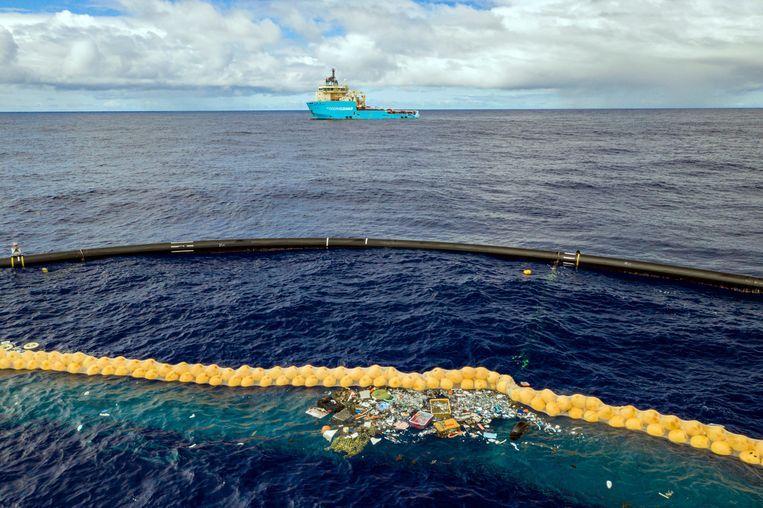The photo was meant to radiate success – finally, Boyan Slat’s plastic trap is working – but marine biologists especially see the animals that float between the captured plastic.
The image confirms their concerns about the impact on marine life as floating arms of hundreds of meters long start cleaning up plastic on a large scale. Dutchman Boyan Slat’s ambitious project is still in the testing phase, but in a few years’ time, he hopes to clean up half of the most considerable accumulation of waste in the Pacific Ocean.
In the American magazine The Atlantic, Rebecca Helm, a biologist at the University of North Carolina, described at the beginning of this year, already to fear that floating life will be scooped up en masse as a result.
Now she shares on Twitter the photo of The Ocean Cleanup, as the project of Slat is called, with “hundreds” of floating animals circled between the captured plastic. These are mainly mizzen, floating jellyfish. That The Ocean Cleanup presents this photo as a success story is “totally stupendous”, conservation biologist David Shiffman, affiliated with Simon Fraser University in Canada, also tweets.
Bycatch
“In the upper meters of the ocean”, biologist explains, “hover and float among other things, juveniles, snails and insects (such as hylobates, which resemble a Water strider)”. These animals, in turn, serve as food for fish and sea turtles, for example.
Many of the surface animals float passively with the current. Just like plastic, in other words. Therefore not surprised that they are picked up by the catching arm, while, for example, fish swim away.
The Biologist also expects bycatch that is not visible in the picture. Such as the eggs of flying fish, which are attached to floating material in strands. If Boyan Slat wants to achieve his high cleaning ambitions, the biologist “will start to worry about the possible population and ecosystem effects”.
Ultimately, you have to look at this as a cost-benefit analysis, he says. As far as the benefits are concerned, it still lacks details. “How many square kilometers of the surface has been scraped off for how much time to get the material shown together?”
Impact
In a reaction, The Ocean Cleanup acknowledges that floating animal species have been identified among the collected waste and is “not happy with this”. However, the impact would be limited. The organization emphasizes that this is not yet the final version of the cleaning installation.
In a blog post at the beginning of this year, Slat already stated that the cleaning program covers a relatively small part of the ocean because the waste is concentrated. In addition, some of the species in question would reproduce very quickly, as a result of adaptation to destructive storms that destroy large parts of the population.
By e-mail, Rebecca Helm brings up against the fact that animal species are not evenly distributed across the ocean. According to her, the location on which The Ocean Cleanup wants to focus is, for example, the habitat of a kind of blue sea slug.
